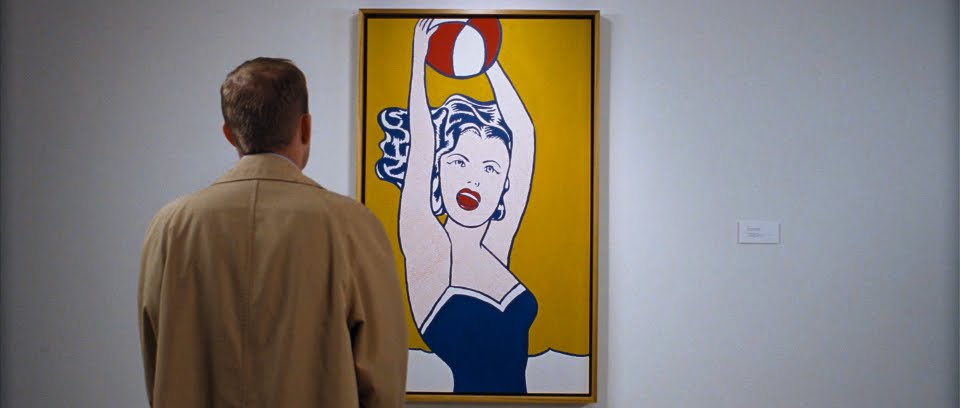“Andres,
This just came to me the other day....
What about Barton Fink?
There is the image of the woman on the beach that hangs in his LA hotel room. It is located above his writing desk on the wall behind which Charlie Meadows resides (John Goodman, the Everyman of Pain and pent up rage). It serves as an image of desire, the unknown, wide open potential, the Californian dream, etc.
It isn't exactly a "painting". More like a vacation print or commemorative platter sold to tourists. But I think it recalls the kind of movie you are talking about where someone studies a painting longingly. The cheap reproducibility of the image echoes the way Barton sees the movies and resonates when he sees "the real girl" on the beach. He says "You are so beautiful... are you in the pictures?" He is obsessed with authenticity, and won't own up to the "base" nature of his inspiration (cheap plate with mass-produced image of beautiful lady at beach).
Just a thought."


"Dear Sean,
Yes, you were right about the scene in Barton Fink with the postcard of the beach girl. I remember it had a profound effect on me when I saw the film... I almost forgot it until you brought it up. I'm pretty sure now that Barton's postcard was playing deep down in my head while I was writing Flat Love. Maybe that's the reason behind choosing the Lichtenstein's painting... Funny... I wasn't aware of it until now... Something clicked in my brain when I saw "Girl with Ball" at the MOMA. It may have been the Barton Fink's postcard... sitting somewhere in my unconscious... Weird..."


"Andres,
To me the resurfacing of an image (in an altered form) that you might have first encountered elsewhere is the core of the artistic/symbolic experience. Orpheus goes to the underworld. AND COMES BACK with something. Most people never go. Or if they do, they don't come back. To come back is to be altered. To bring something back is to acknowledge the change that has taken place within you and try to share it with others.
Most people see the thing and the resonance subsides and only dimly resonates with some aspect of their lives (a fleeting sensation of deja vu that is shrugged off). The artistic temperament is to sense the change in yourself and to investigate it and share what you've learned from your experience. To tap in, and to channel the flow (altered by your experience and your sensibility). Everything you've ever done or experienced influences you and permeates who you are and what you create. Or something like that.
Barton Fink's obsession with authenticity and pain and authentic pain reminds me of the heroin obsession of the early 1990s. Those people who, like Barton Fink, only think that artistic inspiration can come from deep psychological pain. But when confronted with his own inner Charlie Meadows, Fink is totally aghast. His search for the "common man" has led him to a dark place full of rage. Some people feel like they have to destroy their lives before they have anything of interest to share in their art. Whereas I would say that art is what helps us survive. Which can be related to good days, bad days, mundane days, every day.
Anyhow. It is weird (and exciting) when images that were sitting quietly somewhere in your subconscious waiting for their moment, suddenly realize that it is time for a reunion."


Thanks, Sean.


No comments:
Post a Comment